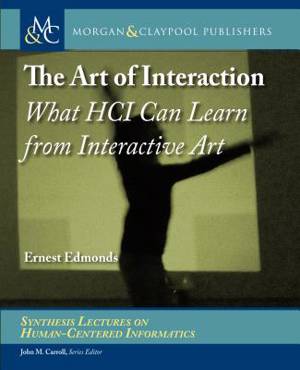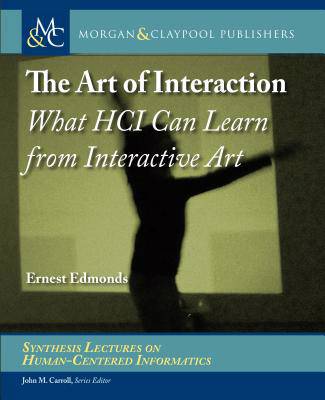
- Afhalen na 1 uur in een winkel met voorraad
- Gratis thuislevering in België vanaf € 30
- Ruim aanbod met 7 miljoen producten
- Afhalen na 1 uur in een winkel met voorraad
- Gratis thuislevering in België vanaf € 30
- Ruim aanbod met 7 miljoen producten
Zoeken
€ 80,45
+ 160 punten
Uitvoering
Omschrijving
What can Human-Computer Interaction (HCI) learn from art? How can the HCI research agenda be advanced by looking at art research? How can we improve creativity support and the amplification of that important human capability? This book aims to answer these questions. Interactive art has become a common part of life as a result of the many ways in which the computer and the Internet have facilitated it. HCI is as important to interactive art as mixing the colours of paint are to painting. This book reviews recent work that looks at these issues through art research. In interactive digital art, the artist is concerned with how the artwork behaves, how the audience interacts with it, and, ultimately, how participants experience art as well as their degree of engagement. The values of art are deeply human and increasingly relevant to HCI as its focus moves from product design towards social benefits and the support of human creativity. The book examines these issues and brings together a collection of research results from art practice that illuminates this significant new and expanding area. In particular, this work points towards a much-needed critical language that can be used to describe, compare and frame research in HCI support for creativity.
Specificaties
Betrokkenen
- Auteur(s):
- Uitgeverij:
Inhoud
- Aantal bladzijden:
- 73
- Taal:
- Engels
- Reeks:
Eigenschappen
- Productcode (EAN):
- 9781681732855
- Verschijningsdatum:
- 9/03/2018
- Uitvoering:
- Hardcover
- Formaat:
- Genaaid
- Afmetingen:
- 191 mm x 235 mm
- Gewicht:
- 376 g

Alleen bij Standaard Boekhandel
+ 160 punten op je klantenkaart van Standaard Boekhandel
Beoordelingen
We publiceren alleen reviews die voldoen aan de voorwaarden voor reviews. Bekijk onze voorwaarden voor reviews.








